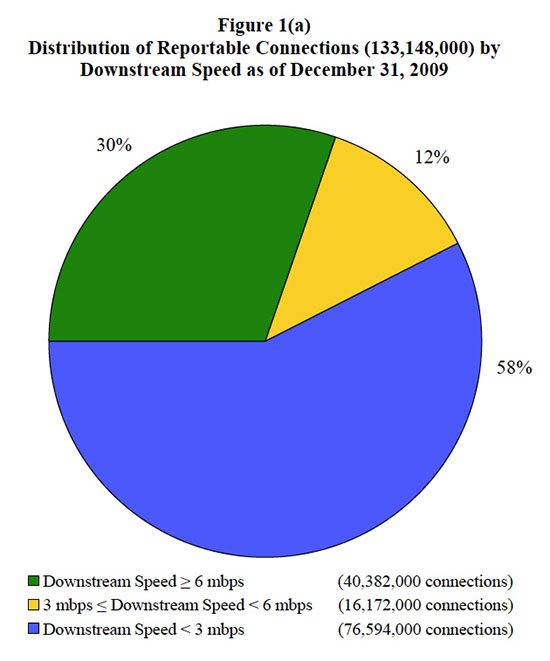 The Federal Communications Commission (FCC) just released an 87 page report entitled, “Internet Access Services: Status as of December 31, 2009” (PDF). What this report reveals—that 68% of so-called “broadband” internet connections don’t meet the FCC’s new minimum standard of 4 megabits per second (mbps) download and 1mbps upload—should be taken in to consideration whether you’re an internet or web-based developer, a company delivering ever-richer and more robust services (i.e., bandwidth intensive ones) or are just curious about the true state of broadband in the United States.
The Federal Communications Commission (FCC) just released an 87 page report entitled, “Internet Access Services: Status as of December 31, 2009” (PDF). What this report reveals—that 68% of so-called “broadband” internet connections don’t meet the FCC’s new minimum standard of 4 megabits per second (mbps) download and 1mbps upload—should be taken in to consideration whether you’re an internet or web-based developer, a company delivering ever-richer and more robust services (i.e., bandwidth intensive ones) or are just curious about the true state of broadband in the United States.
Though many people who have commented here on Minnov8, through Twitter to our account (or our personal ones) seem truly excited when reports in 2007 showed the U.S. exceeded 50% of households had broadband. Then that excitement is tempered with reports like this one stating “U.S. Broadband: Still Expensive; Still Underwhelming” compared to the rest of the world.
But it wasn’t until this FCC comprehensive analysis appeared this week that a clearer picture of the true state of broadband penetration appeared. Take a look at Figure 1(a) from the report (after the jump) and you’ll note that over 92 million of the 133 million U.S. households with broadband have download speeds between 6mbps and 3mbps with 58% of the total having less than 3mbps download speed!

Noted in the report is this interesting tidbit: wireless service subscribers with mobile devices and data plans for full Internet access grew 48 percent to 52 million in the second half of 2009. Some of us who understand much of the technical underpinnings of connection speeds, throughput, and latency on wireless vs. wired connections to the internet are cautiously optimistic about wireless. Though it might be “OK” for many people as their primary access to the internet, the caps on downloading data are even more stringent than a home broadband connection (wireless is often 5GB maximum per month with a cable internet account receiving a 250GB ceiling on downloading).
The bottom line is that you need to have a realistic view of the connection speeds, growth of wireless broadband, geographic distribution and devices as you work on your strategy for internet and web innovation.